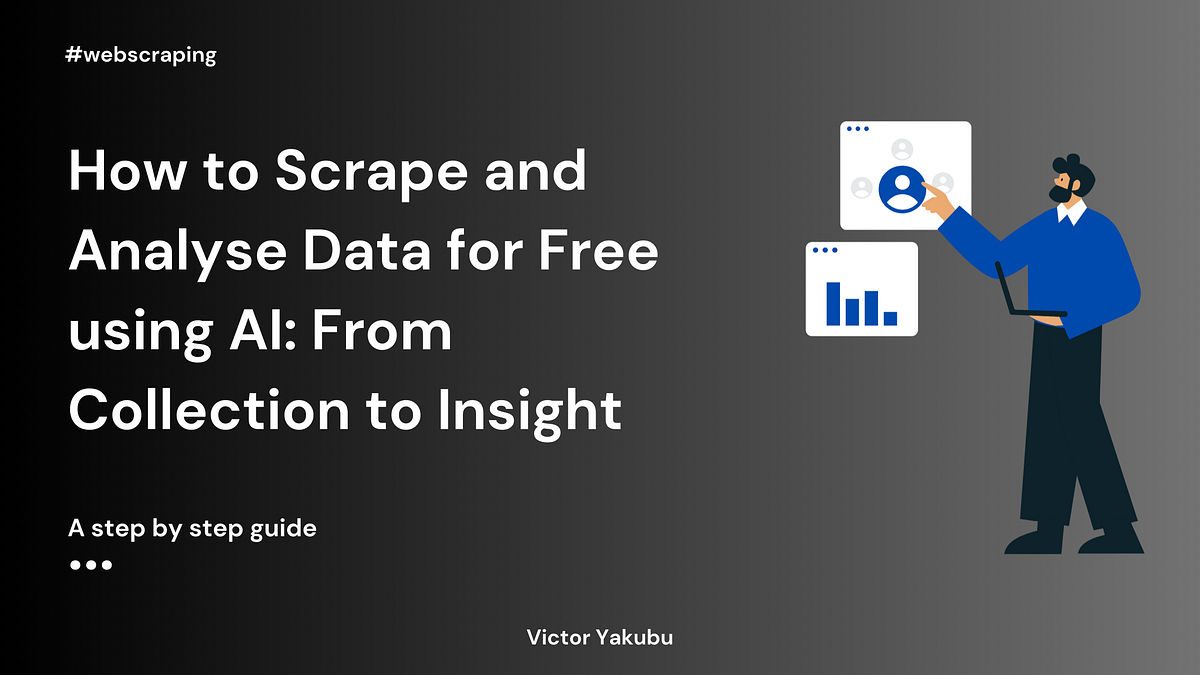It is unarguable that Artificial intelligence (AI) has grown so much over the years and is widely adopted now in recent times in almost every aspect of human lives making it easier and faster. In major industries, AI is being deployed for better processes. AI also depends largely on data, meaning that the data industry isn’t left behind in this adoption.
Augmented analytics involves the use of AI-driven algorithms, machine learning (ML), natural language processing (NLP), and data visualization tools to enhance data analysis processes which includes data preparation, performing advanced analytics, and presenting the insights in easily understandable and visually appealing forms.
Simply put, ‘Augmented analytics improves all kinds of analysis using artificial intelligence to make data-driven decisions’.
You may be wondering how it differs from the traditional analysis. Well, augmented analytics goes beyond it by not only providing descriptive analytics but also predictive and prescriptive analytics, enabling organizations to anticipate future trends and generate insights that would otherwise be time-consuming and error-prone for humans to accomplish. It also does not require the user’s experience working with data.
Delve in to understand more on its processes, use cases and all you need to know to leverage on it either as a data professional or a business.

Evolution and Impact of Augmented Analytics on Data Analysis
The term ‘Augmented analytics’ was introduced by a research firm *Gartner* in 2017 and was called the future of data analytics.
In today’s rapidly growing data-driven world, we are presented with large amounts of data every second, making extraction of useful insights from these data difficult especially without the right tools and technologies. This is where augmented analytics comes into play, revolutionizing the way data is analyzed by automating processes, automatically analyzing vast amounts of data, detecting anomalies, uncovering hidden patterns, and delivering valuable insights in a user-friendly manner.
Augmented analytics will continue to transform business processes and operations if used to its best potential.
How Augmented Analytics Works with the Aid of AI — ML and NLP
As earlier mentioned, AI technologies are used within augmented analytics. Artificial Intelligence is the ability of machines to imitate human intelligence. Machine learning and natural language processing are under AI.
Machine learning involves the application of data to train machines on how to identify patterns and improve from experience using algorithms.
Natural language processing is based on ML algorithms to interpret, understand and translate human languages. Users can ask conversational questions by using NLP.
Embedding these capabilities into data visualization or business intelligence tools allows the working process of augmented analytics.
A typical example of this process; let’s say the head of sales in an organization XYZ wants to understand the insight of sales activity over a certain period, she can achieve this by typing a few questions through the aid of NLP into the tool, AI then provides the most relevant results considering the data and search prompt and displays visual representations. By doing this, she gains the insights she needs efficiently and in no time without essentially having an experience in data. She can further explore, tweak and filter her results to help make the best decisions concerning the sales of the organization.
Augmented Analytics Use Cases
Numerous industries, such as healthcare, marketing, finance etc. successfully implement augmented analytics tools to achieve significant business outcomes. Some of the uses include:
- Customer Relationship Management (CRM) analysis
Augmented analytics is particularly valuable in CRM analysis, where large volumes of customer data are processed and analyzed. By leveraging AI-driven insights, organizations can gain deeper understanding of customer behavior, preferences, and purchase patterns, enabling them to personalize marketing strategies and enhance customer engagement.
- Revenue forecasting and sales analysis
Augmented analytics tools can analyze historical sales data, market trends, and external factors to generate accurate revenue forecasts. By identifying key sales drivers and potential growth opportunities, organizations can optimize sales strategies, allocate resources effectively, and amplify revenue generation.
- Fraud detection and prevention
With the ability to process vast amounts of data in real-time, augmented analytics tools can detect patterns and anomalies indicative of fraudulent activities. By leveraging AI algorithms, organizations can proactively identify fraud risks, enhance security measures, and prevent financial losses.
- Supply chain optimization
Augmented analytics aids in optimizing supply chain operations by analyzing historical and real-time data to identify bottlenecks, streamline processes, and optimize inventory management. By leveraging AI-driven insights, organizations can enhance efficiency, reduce costs, and improve overall supply chain performance.
Benefits of Augmented Analytics
Augmented analytics significantly empowers individuals by democratizing access to data analysis, allowing those with various levels of expertise, including beginners and seasoned professionals, to effectively interpret and leverage data. By taking online courses focused on data analysis, users can enhance their skills in using advanced analytics tools like Tableau and Power BI, pivotal in making informed decisions.
- Improved data accessibility and usability — Augmented analytics provides user-friendly interfaces and intuitive visualizations. This empowers users across the organization to access and interpret data, enabling them to make data-driven decisions without relying solely on data scientists or analysts.
- Enhanced data visualization and storytelling — Augmented analytics tools are able to present visually appealing formats of large data. This facilitates effective communication and storytelling, enabling stakeholders to understand and interpret data insights more efficiently.
- Accelerated decision-making and predictive analytics — By automating data analysis processes and delivering real-time insights, augmented analytics enables organizations to make faster and more informed decisions. Predictive analytics capabilities further empower organizations by providing foresight into future trends, allowing them to proactively respond and capitalize on opportunities.
- Reliability — Using augmented analytics tools can help reduce the risk of human error making insights more reliable and accurate.
Limitations / Challenges Implementing Augmented Analytics
Implementing augmented analytics may pose challenges such as:
- Poor data quality leading to inaccurate result
- Difficulty of machines to understand user behavior and feedback with limited data context
- Augmented analytics can be complex and could take a lot of computing power
- Misconception of AI taking people’s jobs
Popular Augmented Analytics Tools and Platforms
There are several augmented analytics tools available, including
- Tableau
- Microsoft Power BI
- Qlik Sense
- IBM Cognos Analytics
- SAP Analytics Cloud
- Amplitude
- ThoughtSpot
These tools offer intuitive interfaces, advanced data visualization capabilities, and AI-driven insights, catering to various business needs and analytics maturity levels.
Future Trends and Innovations in Augmented Analytics
The integration of machine learning algorithms in augmented analytics tools enhances predictive capabilities and provides deeper insights into data patterns and trends. Continuous advancements in machine learning algorithms will further improve the accuracy and effectiveness of augmented analytics. As augmented analytics continues to evolve, its potential to revolutionize data-driven decision-making is profound. By democratizing data analysis and empowering users across the organization, augmented analytics has the potential to drive innovation, improve operational efficiency, and unlock new growth opportunities.

Summary and Conclusion
Augmented analytics is revolutionizing data analysis by combining the power of AI-driven insights with human intelligence which plays important roles to business as earlier listed. The impact of augmented analytics extends across industries and businesses of all sizes; from optimizing customer relationships and boosting sales to preventing fraud and streamlining supply chains, augmented analytics has the potential to drive significant efficiencies, fuel innovation, and deliver sustainable competitive advantages.
Thank you for reading and I hope you found this piece useful.

